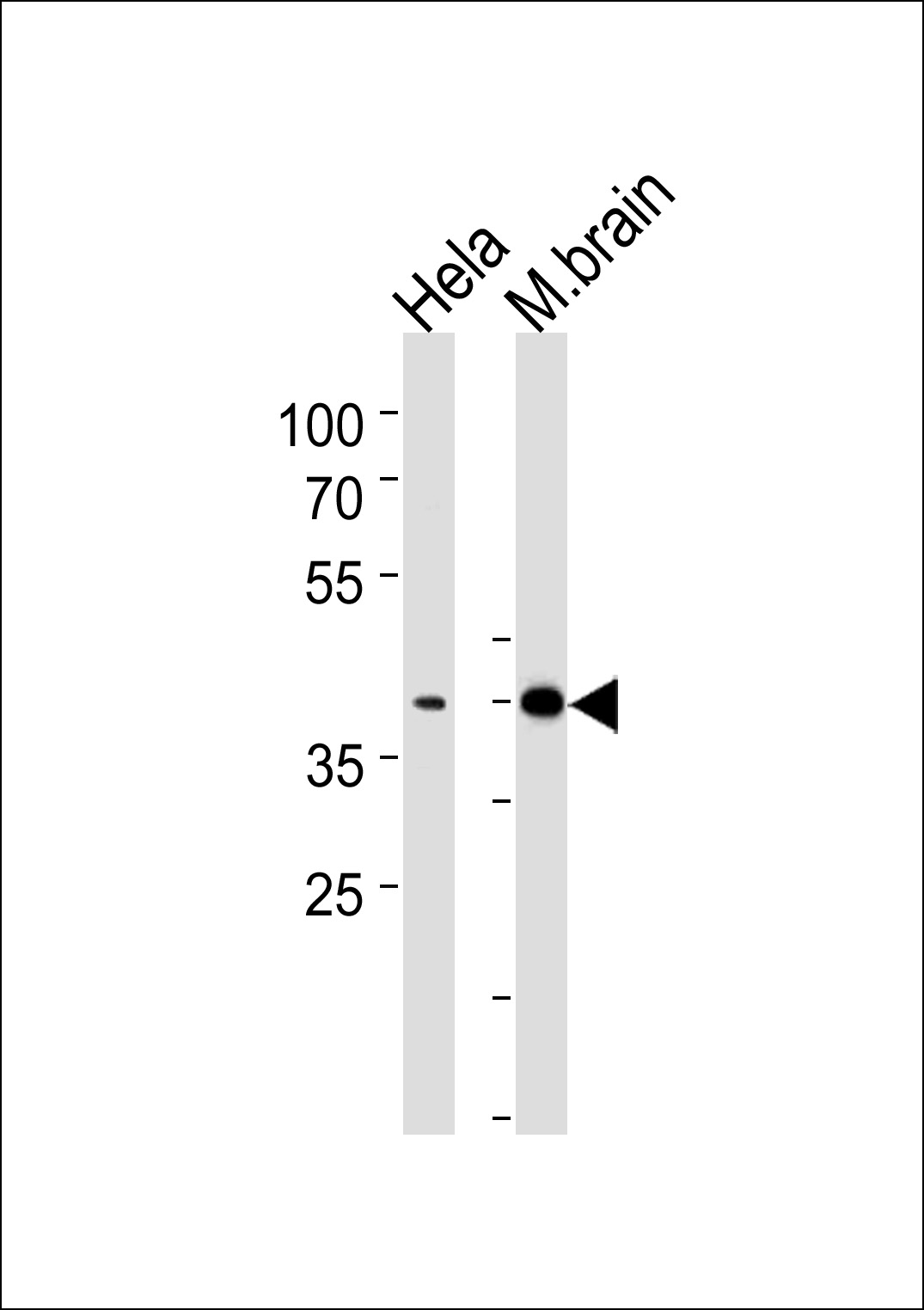产品名称
ATF2 Rabbit Polyclonal Antibody (Center T339)
别名
Cyclic AMP-dependent transcription factor ATF-2, cAMP-dependent transcription factor ATF-2, Activating transcription factor 2, Cyclic AMP-responsive element-binding protein 2, CREB-2, cAMP-responsive element-binding protein 2, HB16, Histone acetyltransferase ATF2, cAMP response element-binding protein CRE-BP1, ATF2, CREB2, CREBP1
存储缓冲液
Purified polyclonal antibody supplied in PBS with 0.09% (W/V) New type preservative N. This antibody is purified through a protein A column, followed by peptide affinity purification.
Human Gene ID
NP_001243019.1;NP_001243020.1;NP_001243021.1;NP_001243022.1;NP_001243023.1;NP_001871.2
Human Swissprot No.
P15336
特异性
This ATF2 antibody is generated from rabbits immunized with a KLH conjugated synthetic peptide between 318-347 amino acids from the Central region of human ATF2.
运输及保存条件
Maintain refrigerated at 2-8°C for up to 2 weeks. For long term storage store at -20°C in small aliquots to prevent freeze-thaw cycles.
背景介绍
This gene encodes a transcription factor that is a member
of the leucine zipper family of DNA binding proteins. This protein
binds to the cAMP-responsive element (CRE), an octameric
palindrome. The protein forms a homodimer or heterodimer with c-Jun
and stimulates CRE-dependent transcription. The protein is also a
histone acetyltransferase (HAT) that specifically acetylates
histones H2B and H4 in vitro; thus it may represent a class of
sequence-specific factors that activate transcription by direct
effects on chromatin components. Additional transcript variants
have been identified but their biological validity has not been
determined.
组织表达
Ubiquitously expressed, with more abundant expression in the brain
细胞定位
Nucleus. Cytoplasm. Mitochondrion outer membrane. Note=Shuttles between the cytoplasm and the nucleus and heterodimerization with JUN is essential for the nuclear localization Localization to the cytoplasm is observed under conditions of cellular stress and in disease states. Localizes at the mitochondrial outer membrane in response to genotoxic stress. Phosphorylation at Thr-52 is required for its nuclear localization and negatively regulates its mitochondrial localization. Co-localizes with the MRN complex in the IR-induced foci (IRIF)
功能
Transcriptional activator which regulates the transcription of various genes, including those involved in anti-apoptosis, cell growth, and DNA damage response. Dependent on its binding partner, binds to CRE (cAMP response element) consensus sequences (5'-TGACGTCA- 3') or to AP-1 (activator protein 1) consensus sequences (5'-TGACTCA- 3'). In the nucleus, contributes to global transcription and the DNA damage response, in addition to specific transcriptional activities that are related to cell development, proliferation and death. In the cytoplasm, interacts with and perturbs HK1- and VDAC1-containing complexes at the mitochondrial outer membrane, thereby impairing mitochondrial membrane potential, inducing mitochondrial leakage and promoting cell death. The phosphorylated form (mediated by ATM) plays a role in the DNA damage response and is involved in the ionizing radiation (IR)-induced S phase checkpoint control and in the recruitment of the MRN complex into the IR-induced foci (IRIF). Exhibits histone acetyltransferase (HAT) activity which specifically acetylates histones H2B and H4 in vitro (PubMed:
10821277). In concert with CUL3 and RBX1, promotes the degradation of KAT5 thereby attenuating its ability to acetylate and activate ATM. Can elicit oncogenic or tumor suppressor activities depending on the tissue or cell type.

